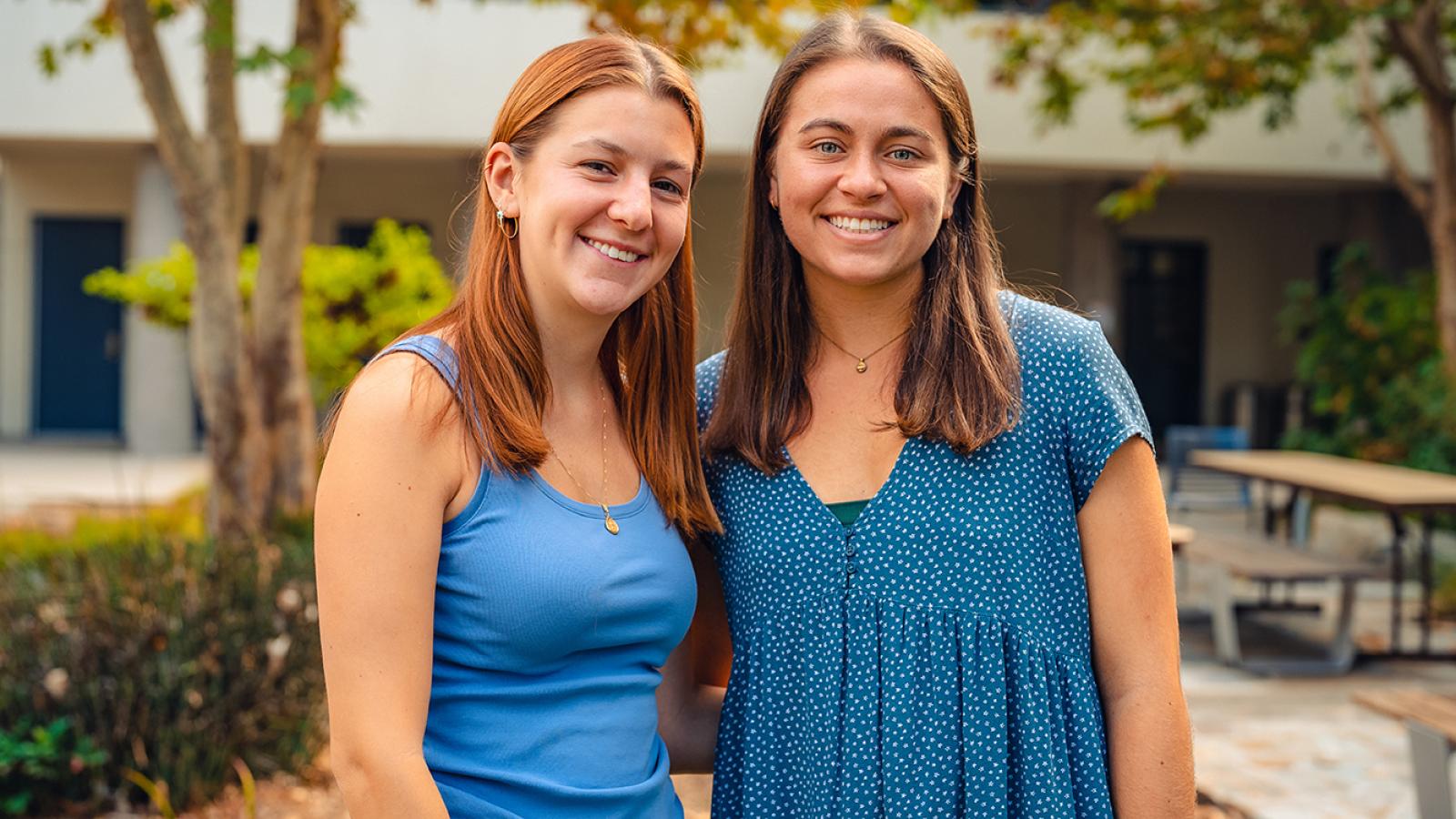When pandemic stay-at-home orders forced her Foundation for Modern Physics laboratory course online, Seeley W. Mudd Professor of Physics Janice Hudgings faced the challenge by turning to Hexbugs—robotic bug toys—and two physics majors—Genevieve DiBari ’23 and Liliana Valle ’23—for help. Now DiBari and Valle are the lead authors of an article published in American Journal of Physics about the online lab course they helped to design.
During the first summer of the pandemic, Hudgings took an Effective Online Teaching class offered by the College’s Information Technology Services. That class prompted her to start from the beginning by re-examining the learning objectives for the lab.
“When I started thinking about learning objectives, I thought, ‘Maybe I’ve been focusing on the wrong thing,’” says Hudgings. “Physics labs tend to focus on using equipment. And yet, if you look at what the American Association of Physics Teachers recommends, they see lab as more a preparation for research skills.”
Hudgings reached out to DiBari and Valle, both students who had been working in her research lab before the pandemic, to collaborate with her to design the lab course from scratch. Over the summer, DiBari and Valle researched labs that could be done at home using Hexbugs and simple materials. They tested potential experiments and eventually wrote instructions for a short introductory lab experiment.
At one point, DiBari needed a tripod to track the motion of a Hexbug, but since she didn’t have one, she improvised by taping her phone to a ceiling fan. “My parents were horrified, but it worked,” she says.
Hexbugs figured prominently in the experiments. Small, inexpensive toys popular with children (and cats), Hexbugs were used in the course to model physical phenomena such as gas pressure and electrical conduction. After students in the course completed the first lab designed by Valle and DiBari, they proposed and implemented their own experiments using Hexbugs.
Hudgings says these self-designed labs helped students ask questions such as: “How do I choose a research question?” “How do I build an experimental setup?” and “How do I figure out why it didn’t work and adjust the setup?”
“The online lab almost paradoxically focused much more on these core research skills,” Hudgings says.
Valle adds, “There was an appreciation for developing their own ideas, and I think that kept students more engaged in the lab course. Developing those methods on their own was helpful for them and made sure that there was a lab that they actually wanted to do rather than something that was more top down.”
The paper describes some of these student experiments, and the three of them hope that the paper will benefit others teaching physics labs.
“There’s a lot of online learning still going on. I think it’s a good online lab that actually lets students do real experiments rather than just manipulate simulations,” says Hudgings. “But I also hope that it gets read more broadly, even by people who teach in person, because the paper contains a reflection on, ‘Why do we teach lab and what are the underlying goals?’”
DiBari adds, “By making these relatively simple setups, I hope it allows students to recognize some of the broader goals of doing experimental work and how you don’t necessarily need to be using really high-tech equipment and you don’t really need to have a very complicated research question to do actual experimental work.”
After the course ended, the three of them continued to work closely together. DiBari and Valle were able to get “a deep dive into the writing of a scientific paper,” says Hudgings. With a nod to the two seniors, she says, “This whole project also turned out to be a fun way to stay in touch with you guys during the pandemic.”
